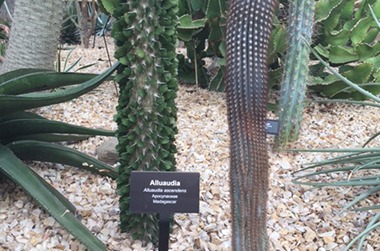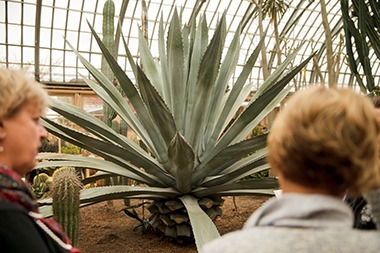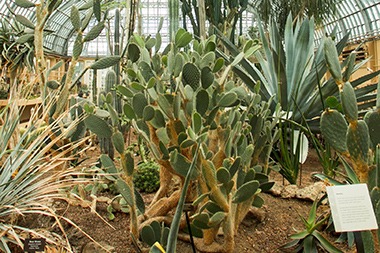The Desert House holds one of the region’s most varied collections of cacti and succulents. These plants owe their popularity to their spectacular and unique forms, the promise of brilliant, short-lived flowers and their ability to withstand harsh, dry conditions. The size of the plants in this room varies from the tiny living stone plant to the large century plants.
Most of the plants in this room are succulents, which means they are adapted to retain water, thus having the ability to survive long periods of drought conditions. Some succulents store water in their roots, others in their stems or leaves. Although the plants here share an adaptation to a desert environment, this room does not reflect a real desert. There are plants in this room from Africa, Asia, the Americas and all over the world that, in nature, would not be growing side-by-side or within such close proximity to one another.





